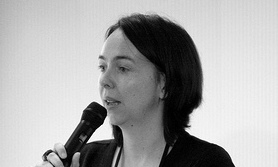 These are my notes from the second Expo workshop with Leisa Reichelt, on Improving Your Site’s Usability – What Users Really Want. Here’s the post covering the morning workshop: Collaboration Techniques that really work.
These are my notes from the second Expo workshop with Leisa Reichelt, on Improving Your Site’s Usability – What Users Really Want. Here’s the post covering the morning workshop: Collaboration Techniques that really work.
Now let’s see:
- It ain’t really funny, but yes, in usability no two experts have got the same understanding. Usability is a field full of theories, many good books out there, and some good blogs too I guess.
- To achieve something that works for the user (hey, this is important for behind the firewall Enterprise 2.0 stuff too) we need both rules and testing, i.e. design guidelines and rules, common conventions and all are not enough to ensure success. Some rules have lost their relevance by now (e.g. three clicks to rule it all …)
- In the field of usability we’re dealing with human brains – these are good at a lot of things, but can be fooled easily (they have finite storage capacity, like when short term memory struggles to store more than about nine things, trying to deal with this e.g. by chunking up things together only works a bit. When attention is a limited commodity we tend to do one decision at a time and stick to habits and learned procedures (yes, these are useful at times, as they require no attention). Our long term memory stores only what we can’t easily deduce (via mental shortcuts and “lifehacks”).
- What else? Interruptions burden our short term memory, switching between tasks takes effort, in modern life unexpected things happen all the time (can you spell Twitter?) making it hard to form habits, yet computers and software expects us to remember how to do things. Here, Leisa talked about the Principle of Commensurate Effort, i.e. people will spend a considerable amount of effort on things that is in proportion to the value they perceive (reminds me both of Bruno Figueiredo’s talk and the notion of “early adopters will use anything” and the Twitter failwhale). Well, yes, even when people are putting up with it, it’s no excuse for bad usability design – and there are good reasons to this too (adoption rests on the motivation of your early adopters, treat them well).
- Leisa talked about Alan Cooper and “polite computing” (14 Principles of Polite Apps, pdf), i.e. software that is interested in me, perceptive, forthcoming, self-confident and responsive. Great rules and lifehacks: make the easy easy, and the difficult possible (yes, wikis make that sound natural), make it quick to scan & digest, avoid clutter and text-only (well, tagclouds are a different beast in my book), users read when needed and avoid it when not needed …
- More user adoption lifehacks: speak the right language (avoid marketese, legalese, technese), lay information scents, i.e. use keywords to guide people in the right direction, people will sniff it out, much like the way they will when you try to foul them (yes, well put, seeing these effects e.g. in wiki portal site usage, when people are avoiding the nicely done navigation and go directly into search mode, and when they rely on the breadcrumb navigation).
- Leverage seducible moments (Jared Spool, see e.g. The Search for Seducible Moments). i.e. “there are specific moments where designers are most likely to influence a shopper to investigate a promotion or special offer. Most of the time, these moments come after the shopper has satisfied their original mission on the site. If we identify the key seducible moment for a specific offer, we can often see over 10 times as many requests”. I wonder how this can be used for intranet application design, got some ideas but need to rework them …
- Support users in a rush, as the paradox of the active user is dreadful (I haste to get rapid results, ergo I make mistakes, making me slower, …), give feedback (“you’re doing great!”). Hmmm, sites should give lots, probably that’s behind one of the great things about wikis – they provide instant gratification.
- don’t under-estimate “tunnel vision“, people are able to ignore a lot, i.e. banner blindness, don’t underestimate the task focus of users – they ignore most stuff. Yes, you need to know what they want to do and get them there, and you need to have an experience strategy.
- User Centered Design as such is interested in both strategic and tactical elements. Whereas Steve Krug’s “Don’t make me think” is on a strategic level, Luke Wroblewski’s “Web Form Design” is on a tactical level.
- Why do UCD (in Enterprise 2.0)? Four key benefits are increased revenue, reduced project risk, reduced customer support costs and more customer retention (yikes, yes, internal users of our systems are customers too ;). All too often project teams don’t understand genuine user requirements (easy, users don’t understand their own requirements themselves at times) – at the same time making late changes is slow and expensive.
- Some ideas: Don Norman and The Design of Everyday Things (“we tend to project our own rationalisations and beliefs onto the actions and beliefs of others”), Jakob Nielsen “to design an easy-to-use interface, pay attention to what users do, not what they say“, user research helps you uncover, understand and design for REAL user requirements.
Now, check out the slides: